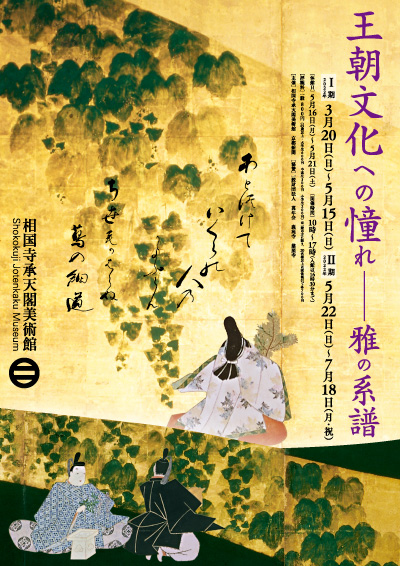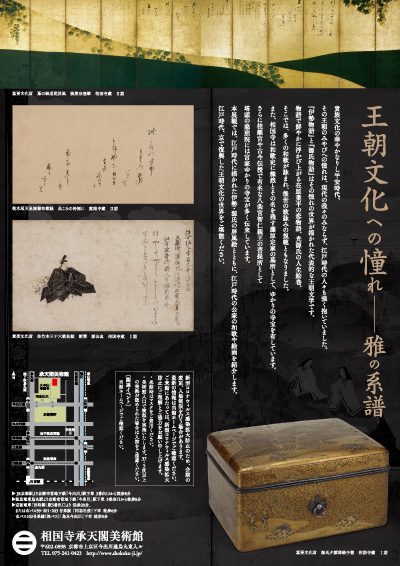EXHIBITION
Admiration of Aristocratic Culture– Genealogy of Miyabi Elegance
Part I: March 20th (Sun.)–May 15th (Sun.), 2022
Part II: May 22nd (Sun.) -July 18th (Mon. / holiday), 2022
Admiration of Aristocratic Culture– Genealogy of Miyabi Elegance
Part I: March 20th (Sun.)–May 15th (Sun.), 2022
Part II: May 22nd (Sun.) -July 18th (Mon. / holiday), 2022
About
The Heian Period had a gorgeous aristocratic culture. Admiration for aristocratic miyabi elegance is still strong among modern-day people as it was during the Edo Period. “The Tales of Ise” and “The Tale of Genji” depicting this exalted world are among the most famous Heian aristocratic literature. They are vivid love stories about Ariwara no Narihira and the life of Hikaru Genji like on a picture scroll. These tales have many waka poems, and they have set a high standard for poems written by later generations.
Shokoku-ji Temple also has the grave of Fujiwara no Teika, a famous and historical figure in waka poetry. Meanwhile, branch temple Jishoin is the family temple for Prince Hachijo Tomohito, famous for founding Katsura Imperial Villa and old and modern poetry traditions. The temple therefore has many treasures related to the Imperial family.
This exhibition shows folding screens painted in the Edo Period depicting the “Tales of Ise” and “Tale of Genji.” Also shown are waka poetry and paintings by the court nobility in the Edo Period. Enjoy the aristocratic culture that was revived in Kyoto during the Edo Period.
Exhibition Layout
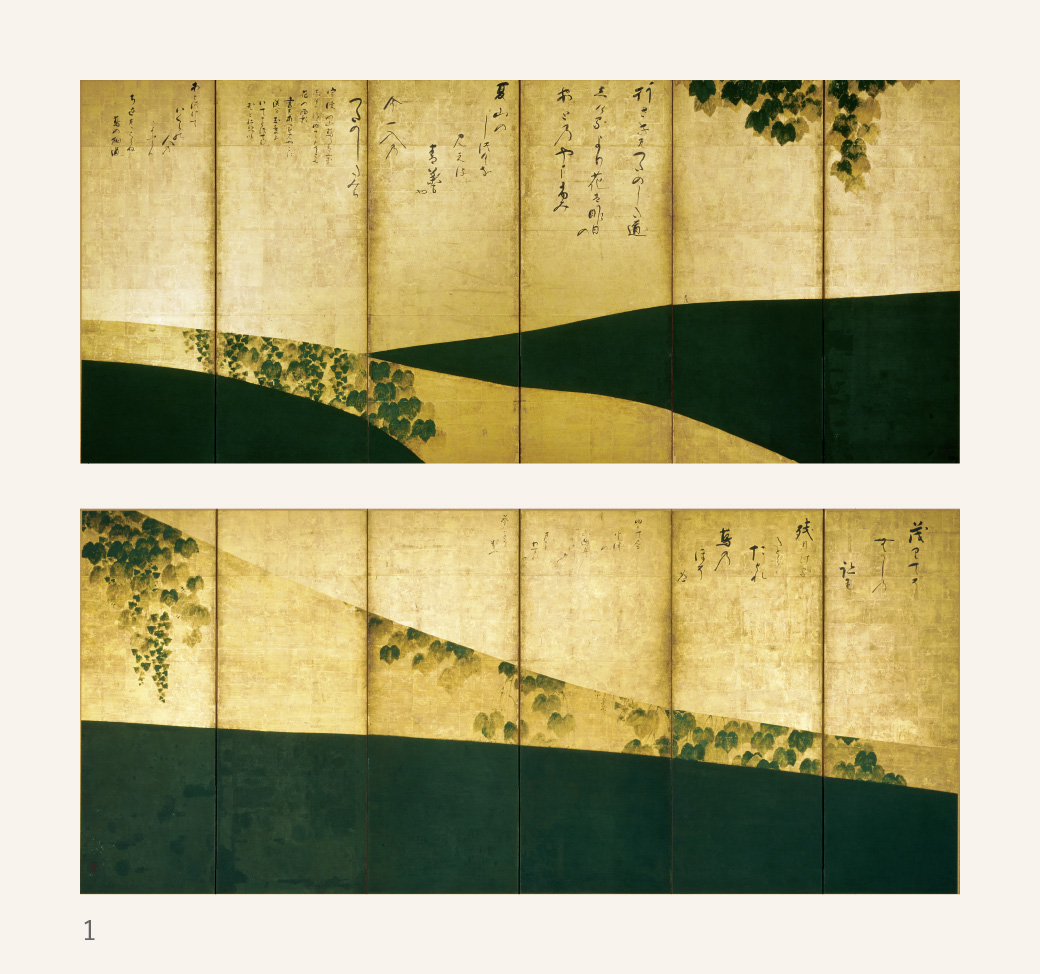
Chapter 1Remnants of The Tales of Ise
“The Tales of Ise” (Ise Monogatari) are poetic stories created in the Heian Period. It was compiled based mainly on Ariwara no Narihira’s waka poems and anecdotes and had a great impact on the later generations.
Important Cultural Properties Tsuta no Hosomichi Road Folding Screen by Tawaraya Sotatsu Shokoku-ji Temple Collection *Part II (Image 1)
The Tales of Ise and Nunobiki Waterfall Folding Screen Shokoku-ji Temple Collection *Part I
Painting of Prostitute Katsuyama Shokoku-ji Temple Collection
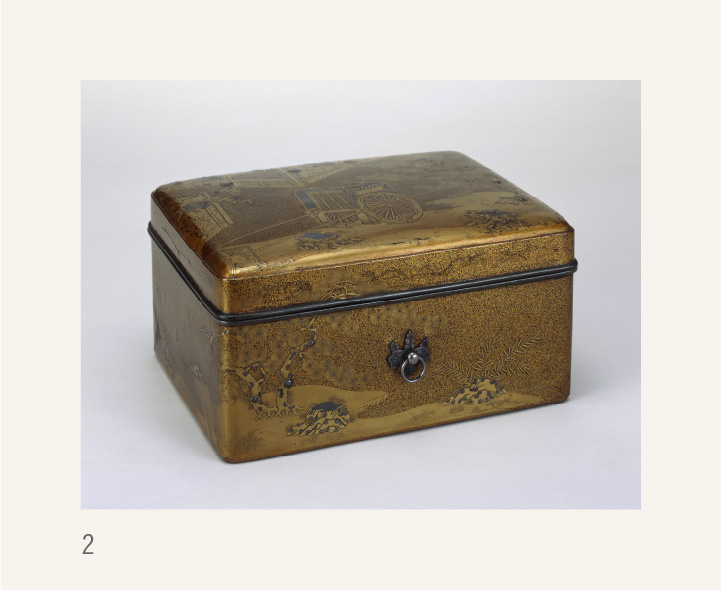
Chapter 2Admiration for the The Tale of Genji
Written in 54 chapters, “The Tale of Genji” (Genji Monogatari) is a long novel written during the mid-Heian Period. It tells a colorful aristocratic story centering on the life of Hikaru Genji.
The Tale of Genji Folding Screen by Tsunenobu Kano Sokoku-ji Temple Collection
The Tale of Genji Folding Screen Shokoku-ji Temple Collection
Important Cultural Property Genji Yugao Maki-e Lacquer Box Shokoku-ji Temple Collection *Part I (Image 2)
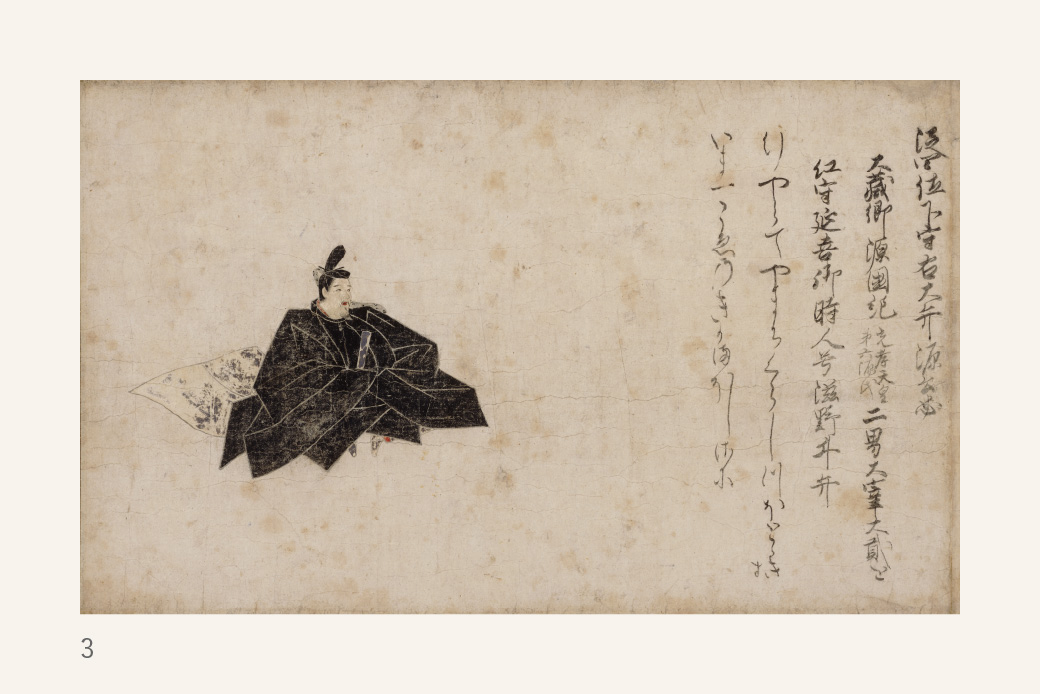
Chapter 3Waka Traditions
Waka is poetry that is the core of Japanese culture, such as the compilation of the Chokusen Wakashu waka poetry anthologies commissioned by the emperor. Various poets from different periods composed the waka poems.
Important Cultural Property Satakebonsan Thirty-Six Immortals of Poetry Pieces Minamoto no Kintada Shokoku-ji Temple Collection *Part I (Image 3)
Thirty-Six Immortals of Poetry Picture Book by Iwasa Matabei Shokoku-ji Temple Collection
Daruma doll illustration by Emperor Goyosei Jishoin Temple Collection *Part I
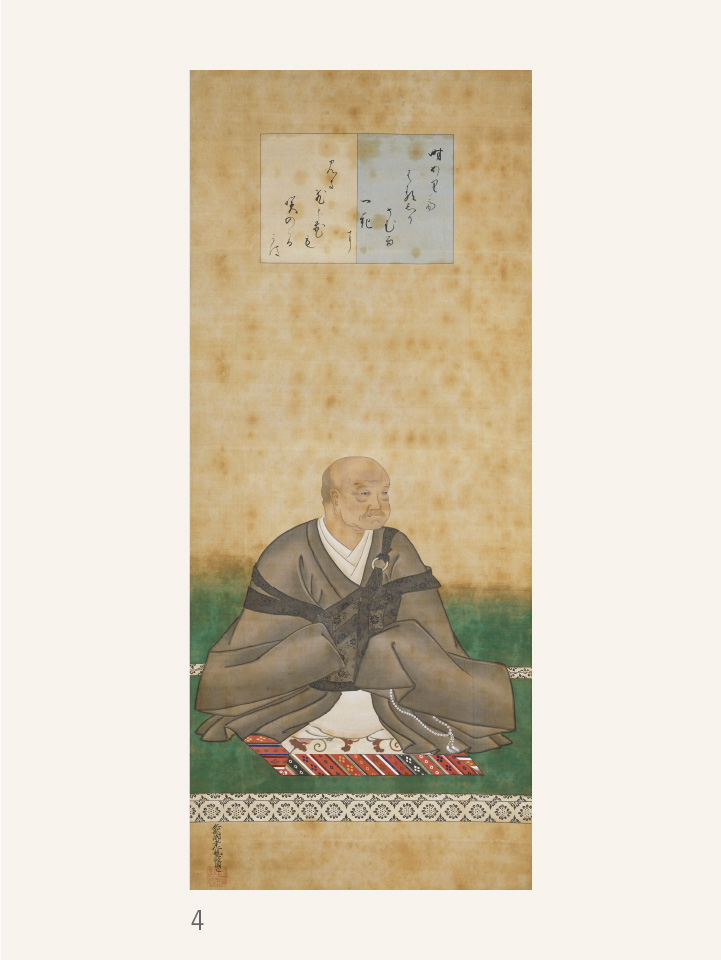
Chapter 4Shokoku-ji Temple and Palace Entry
Shokoku-ji Temple has been located near the palace in Kyoto since the Muromachi Period. Therefore, many children of the nobility joined the priesthood in the temple where they were taught aristocratic culture.
Statue of Emperor Gomizuo Shokoku-ji Temple Collection (Image 4)
Emperor Gomizuo Collaboration with Horin Josho Japanese and Chinese collaborative poetry format Rokuonji Collection *Part I
Picture of Prince Hachijo Toshihito I Jishoin Temple Collection
Highlights
Highlight 1Glorious aristocratic folding screen painting from the Edo Period
“The Tales of Ise” and “The Tale of Genji” depicting the aristocratic culture of the Heian Period inspired many creative works produced by later generations. They have taken diverse forms such as folding screens painted with multiple scenes from the tale or crafts painted without the main characters to leave it to the imagination. There are also tea utensils with inscriptions taken from the tales. See the diverse works.
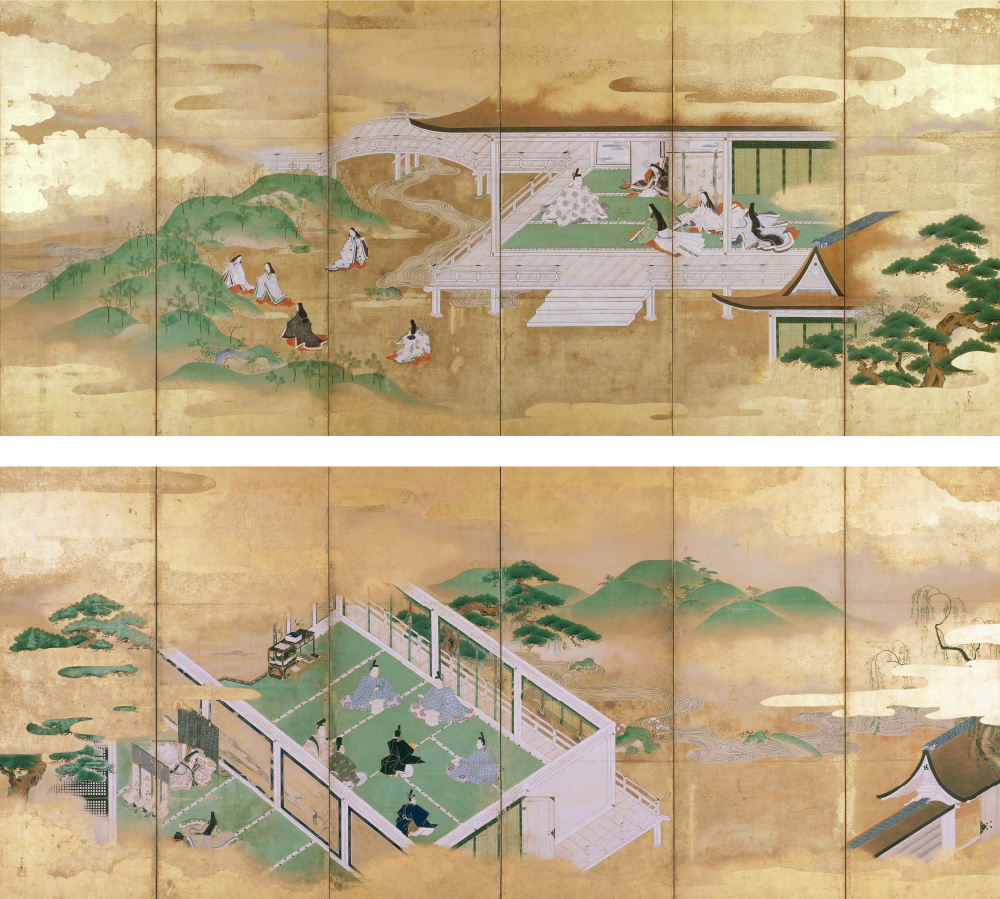
Folding screen with scenes from The Tale of Genji / Tsunenobu Kano’s brush / Shokoku-ji Collection
Highlight 2Renown treasures passed down
Since the medieval period, Shokoku-ji Temple has had many monks from the nobility. Temple documents indicate that these monks still continued seeing Imperial relatives even after entering the priesthood. Especially during the first half of the Edo Period, Go-Mizunoo-in and Shokoku-ji Temples played central roles in cultural recovery, deepening their connection with the nobility. Even when the temple built with donations burnt down, various documents and artifacts still remain today.
Aristocratic culture also deeply permeated the branch temples. The exhibit shows artifacts indicating the influence of the Prince Hachijo family on Jishoin Temple and Fujiwara no Teika’s influence on the branch temples.
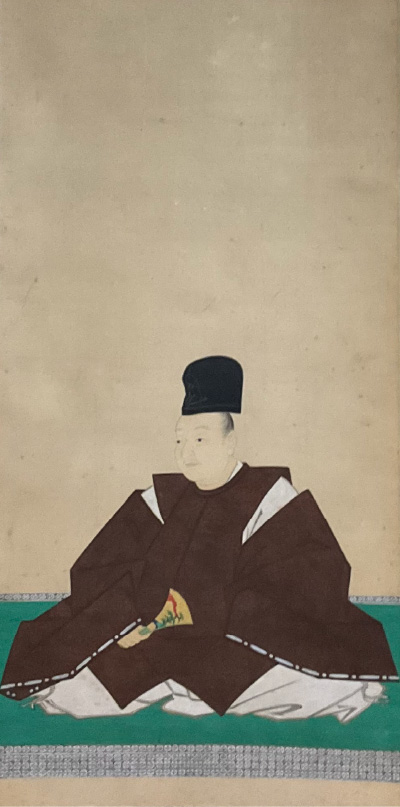
Portrait of Prince Toshihito,
first head of the Hachijo-no-miya family
Jisho-in Collection
Basic Information
- Date and time
- Part I: March 20th (Sun.) – May 15th (Sun.), 2022
Part II: May 22nd (Sun.) – July 18th (Mon., national holiday), 2022 - Admission
-
General ¥800 College students and age 65 or older ¥600 Junior high and high school students ¥300 Elementary school students ¥200 *Group discount for 20 people or more (general public) ¥700/person
- Organizers
- Shokoku-ji Temple Jotenkaku Museum, Kyoto Shimbun
- Sponsors
- Mannenkai (General Incorporated Foundation), Rokuon-ji Temple, Jisho-ji Temple
Related Events
Part I
Slide presentationApril 2nd (Sat.), May 7th (Sat.)2:00 p.m.–2:30 p.m.
LectureMay 3rd (Tue. national holiday)2:00 p.m.–3:30 p.m.
Part II
Slide presentationJune 4th (Sat.), July 2nd (Sat.)2:00 p.m.–2:30 p.m.
LectureJune 11th (Sat.)2:00 p.m.–3:30 p.m.
*The spread of the coronavirus may cancel an event.
See the website for the latest status.

